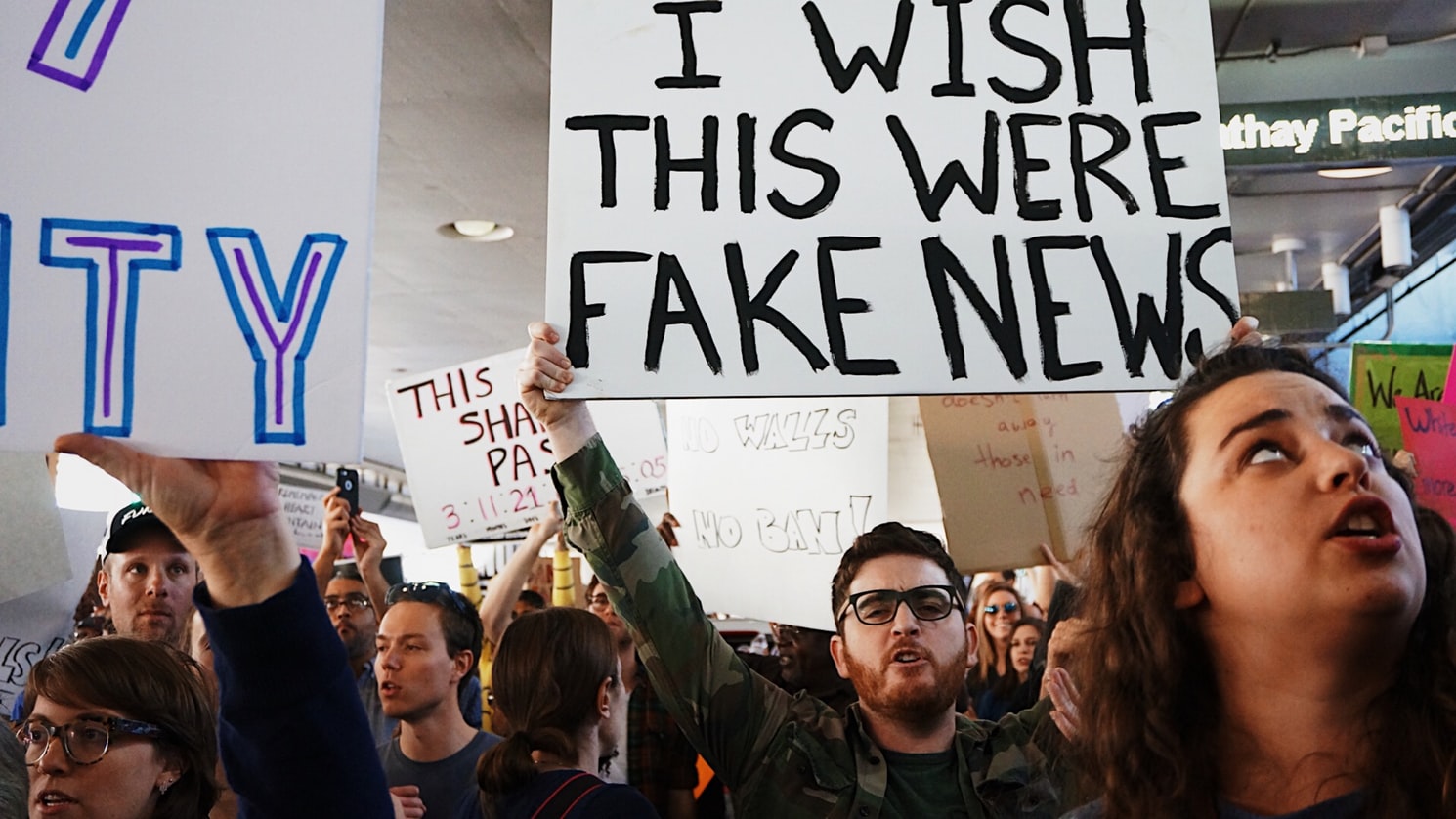
Fake news influences the politics of large countries, their creators earn a lot of money using various monetization schemes, and in the future fake news will be able to crush businesses. We tell who and why creates fake news, how fake information campaigns are organized and how to recognize a fake for an ordinary user.
We understand the concepts
There is a little fake in the name fake news itself: the translation of this combination of words with a tracing paper distorts the meaning of the concept, because fake news has always existed. As far back as the 13th century BC the kings of Egypt and the Hittite state wrote on the stones of their palaces the victory in the battle, which actually ended in a draw. In 1835 (the era of professional journalism was in full swing), The New York Sun doubled its sales saying that the astronomer saw through the heavy-duty telescope the human-like inhabitants of the moon. In the 20th century, the Second World War began with fake news about the capture of the radio station.
In all the examples listed, it was possible to disseminate information to a wide audience only through a certain channel of communication with it - a stone on the wall of the palace, a newspaper, radio (replaced by television). Access to it for those wishing to disseminate such information was strictly limited.
Nowadays, anyone can generate and distribute fake news (we will call them “fake news”), because at the beginning of the 21st century social networks appeared that became an independent and unlimited media environment. The growth of their audience and the variety of information formats (text, photos, audio, video, broadcasts) led to the “democratization of mouthpieces” that were previously only in the hands of authorities or professionals. Moreover, it is in social networks that the fake news translator communicates directly with the audience, bypassing journalists, state censorship and other filters.
And if you use technical and communication technologies in social networks, any fake message can be distributed no worse than the evening news of Channel One. Only a specific motive is needed.

Three components of fake news: social networks, telecommunication technologies and specific motivation. Source: TrendMicro
Set motives
Fake news is almost always about politics or about money. Political manipulators are attracted to their “national” character in social networks, and monetization also attracts commercial intruders.
Politics. More often than not, fake news is generated to influence an election or a political figure. Traditional sources of information are not quite suitable for this, because an ordinary person is more and more inclined to believe “the same simple people as he” in social networks, and not “media affiliated with the state or corporations”. That is why fake news is created with an eye on social networks - here each participant has a certain “neighborly” circle of trust.
Money. By creating fake news, you can increase the activity of certain groups of potential customers. “Only three signs of the zodiac will survive 2020 ...” is a clickbait heading, which ultimately can lead to the landing page of the horoscope’s paid mailing service. The social network in this case plays the role of a surgically accurate tool for involving the right groups of potential customers in the orbit of the brand’s influence. And having survived the year 2020, representatives of “unsuccessful” signs will not even remember the short news, the repost of which they saw in the thematic group.
In the future, there will also be a third motive - competition, that is, fake news will increasingly create a reputation for undermining the business. For example, in 2017, the US Securities and Exchange Commission “covered” a whole network of sites that published paid news and pseudo-analytical articles about certain companies with negative forecasts about their stock prices. Further research showed that fake materials really influenced the prices and volume of transactions with shares of small companies.
Next, we will analyze how, in fact, the mechanism for creating and distributing fake news works.
Parse the algorithm
Fake news campaigns usually take place in several stages, although this is a creative process, and depending on the goals or characteristics of the audience, some stages may be omitted.
1. Intelligence
At the first stage, the campaign organizer studies the target audience. He answers three basic questions: “To whom to lie?”, “About what to lie?” And “Why to lie?”. The analysis is carried out the widest - from the educational level and information literacy of future readers to their views on life. Actually, at this stage Cambridge Analytica experts were caught, who collected personal data of Facebook users for political purposes.
2. Armament
The second stage creates, in fact, fake news. Its main feature is that almost always the “scenery” of a falsified story, that is, the participants in the event, the place and time of the action, is real, and the event itself is fake.
Depending on the size of the company, there may be several fake news. For example, the first story reports an event, and subsequent ones develop a theme. Sometimes even real news is mixed with them that complement the picture of a fictional story. They are aimed at the skeptical part of the potential audience.
In addition to news, at the second stage distribution agents are created: fake users of social networks, fake news sites, fake groups and communities. To do this, black and white SMM technologies are used, allowing for the money to produce and promote fake users of social networks. For example, in the Weibo social network (the Chinese counterpart to Twitter), celebrities with 300 thousand subscribers can be created for about 2.5 thousand dollars in just a month.
3. Distribution
Usually fake news first appears on the same fake news site or on any other site where publications are not controlled in any way. Then a “guru” comes into play - a blogger who has been pumped up and authoritative with the target audience and who publishes the news in his home. The message is picked up by bots - real users of social networks or robots created / attracted specifically for a fake news campaign. In addition to distribution, they perform a very important function - isolate skeptics who remain in the minority and prefer to remain silent instead of confronting fakes.
4. Operation
At the next stage, the news reaches the target audience and begins to live its own life. The most inspired readers like and repost a fake message, share it in instant messengers. There is a viral effect that attracts the attention of an even wider audience - journalists and other professional participants in the media field. Fake news hits mainstream media. Sometimes funny things happen when the fake news itself pops up over the years. For example, in 2017, many world media outlets reported a Russian electronic bomb, allegedly capable of incapacitating ships. Moreover, for the first time, information about this appeared on the Facebook social network back in 2014, when the fake "sailor" talked about the impact of the "electronic bomb" from the SU-24 aircraft on the US destroyer Donald Cook. Subsequently, everything was refuted.
5. Flushing
This stage is used in long-term campaigns designed to fundamentally change the attitude of the target audience to any phenomena, and sometimes diametrically opposite. To do this, not one, but several consecutive fake news campaigns are launched. One and the same story is revealed through various aspects, new heroes of events appear, and the viral effect is generated by multiple waves.
6. “Homework”
After reaching the set goal, additional, reinforcing actions may be required. For example, if we are talking about a campaign that undermines the reputation of a politician, positive news about him can be launched in the information field that is not directly related to the fake story, but slightly corrects the image of the victim in the eyes of the public. Such actions are designed to eliminate the public’s sense of bullying or a planned campaign against a politician.
7. Sweeping tracks
The last stage is the concealment of activity traces. The most common technology to do this is distracting news. Using the already created infrastructure from bots, you can throw a new "information" message. In terms of its subject matter, it should be completely different from the previous fake story, be even more loud and resonant. Such fake news turns public attention to a new problem and "drowns out" the voices of those who, perhaps, at this point were able to identify the previous fake.
Now, having understood the algorithms, let's look at fake news not from the eyes of the creators, but from the audience. And find out in parallel how to counter fake news?
We develop "immunity"
Since fake news directly hits users, the first line of defense can only be made by readers. First of all, they should determine fake news on the following grounds:
1. Hyperbolic and clickbait headers.

News headlines usually convey the essence of an informational message rather than create puzzles

When a truly "legendary rock musician whose hits everyone knows" dies, just write his name to attract the attention of readers
The headlines briefly describe what happened. Otherwise, it is better to ignore the news.
2. Suspicious domains or distorted names of popular media sites similar to real ones
Examples of such sites can be found, for example, here .
Hammer in the search engine the name of the media you are interested in - the originals will be in the first positions in the search results. Compare them with the Internet address of the suspicious source.
3. A large number of errors or typos in the text of the news
Try to find the same story on the websites of the media you know, but in a more detailed form. If the searches are unsuccessful, then most likely you will see automatically generated content.
4. Fake pics or collages

The photo collage is designed for an inattentive reader and is designed to illustrate a failed event.
Try to save a suspicious photo and search for copies of it through photo search engines (Google, TinEyE, etc.). If there are no copies in reputable sources, then most likely you have photoshop in front of you.
5. Lack of time stamps
The publication dates are hiding in order to maximize the “life” of fake news. Such a message will seem relevant as long as you like, until it is clearly contrary to reality.
Score the headline of the suspicious news and try to search for it using time filters. Say, indicate last year or last month. If you find similar news in the archives, then this is most likely a fake.
6. Lack of indication of the author and source
Many fakes are generated automatically, so no mention of either the author or the source remains. Nevertheless, recently fake news has been published by authors of unknown journalists - most likely their names are also random, and real people are not behind them.
Try to find the news or its authors on mainstream-media. First of all, in news agencies.
If the sources are indicated, then try to study them. Sources like “Wikipedia” or “LiveJournal” are more likely attempts to hide real sources of information or their absence.
Finally
Note that at the level of different states , measures are being taken to combat fake news. Among other things, authorities and initiative groups of journalists and public figures create sites that are completely dedicated to tracking and recording fake news. Social networks are developing automated systems for searching, marking and deleting unreliable information. The largest manufacturers of information security tools, such as Trend Micro, using the accumulated experience in the field of machine intelligence, help social networks calculate the profiles of "bots", for which there are no real users. But as always in the field of cybersecurity, the first line of defense is the user's rational approach to the use of technology and the media.